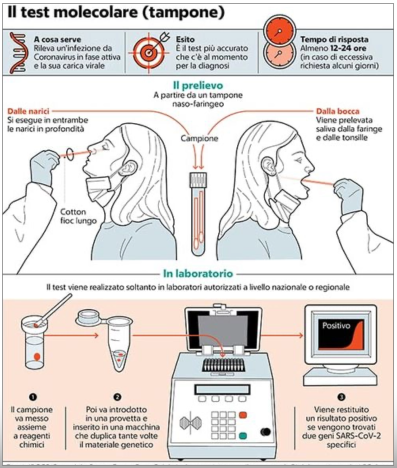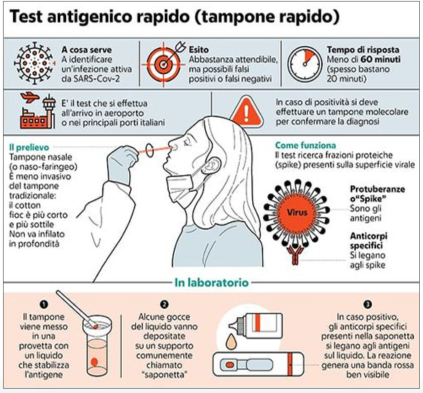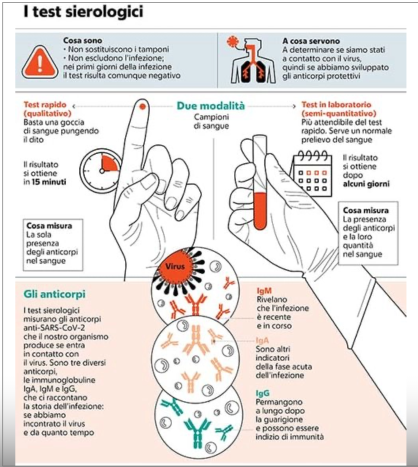SPECIAL COVID-19
What to know
Molecular Covid
The main and most reliable diagnostic tool is the so-called nasopharyngeal molecular swab which summarizes an investigation capable of detecting the genome (RNA) of the SARS-Cov -2 virus in the biological sample through the RT-PCR method. This test has a very high degree of sensitivity and specificity, i.e. it has a high ability to identify individuals who are positive for the virus so that there is as few false positives as possible and an equally high ability to correctly identify those who do not have the disease , the result of this swab is obtained on average in three/six hours. The molecular swab is the first choice, for example, in the event of a suspected symptomatic case, in close contact with a confirmed case showing symptoms, in screening by healthcare workers, in subjects in contact with fragile people or for entry into closed communities and hospitals.
Button
Quick test
The rapid antigen test costs less and does not require specialized personnel, producing the result more quickly (30-60 minutes) compared to the molecular test. It is a useful tool especially for screening investigations and where indications for control actions are needed in a short time. Unlike molecular tests, however, antigen tests detect the presence of the virus not through its acid (RNA) but through its proteins (antigens). For this reason it is also commonly called an antigen test, the reliability is not yet comparable to that of molecular tests and positivity in some contexts may require confirmation of the molecular test. A Green Pass is not generated with the saliva test.
Button
Serological test
Serological tests detect whether people have come into contact with the SARS-COV-2 virus but are not able to confirm or not an ongoing infection and therefore require, in case of positivity, a further molecular swab test for he confirms. In order to reduce the number of false positive results, the use of CLIA and/or ELISA type tests that have a specificity of no less than 95% and a sensitivity of no less than 90% is strongly recommended. Below these thresholds, the reliability of the result obtained is not adequate for the purposes for which the tests are performed.
Button


















